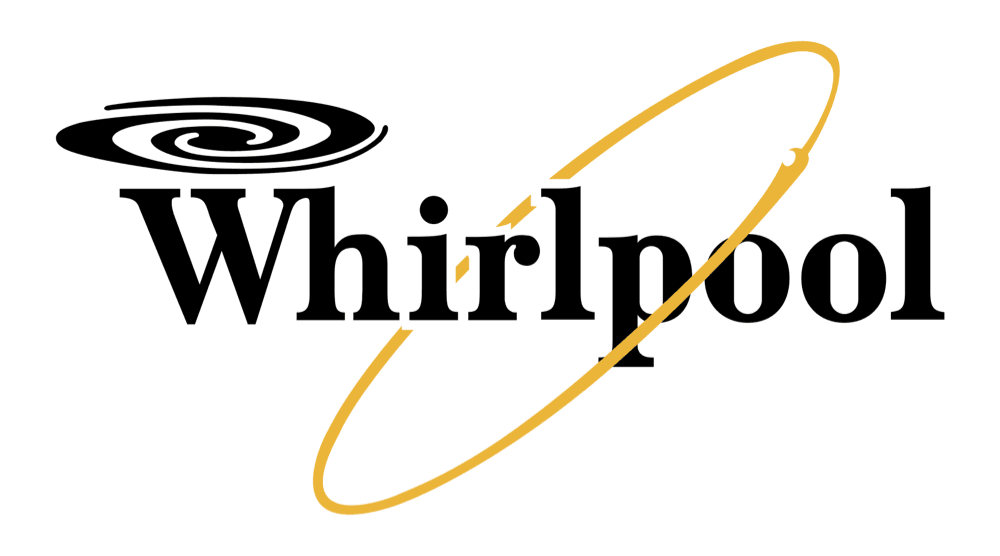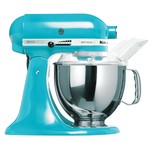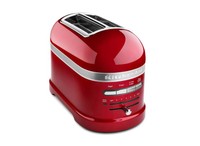Guest Interview: Whirlpool’s UX Manager

February’s Keep It Usable guest interview is with our friend Brandon Satanek. Brandon is the UX Manager of Whirlpool Corporation, a company we’re huge fans of (especially their beautiful KitchenAid products).
Welcome to Keep It Usable Brandon!
Foremost, let me say that I appreciate the opportunity to tell you more about our work at Whirlpool Corporation!
What is your role at Whirlpool?
I am the manager of the User Experience Design team at our global headquarters in Michigan. This team works in the Global Consumer Design department where we collaborate with other creative professionals such as industrial and graphic designers, model makers, and color experts. My team focuses on products sold in the North American region.
What kinds of products do you work on?
We work on the original form of “apps” – appliances! We have the pleasure of creating products that make the everyday lives of people a little bit easier. It may be a refrigerator that helps you organize food for an upcoming party or a cherished stand mixer that makes stirring chocolate into your cookie dough less strenuous. And, we also help with those other “apps” too!
Perhaps one of the most dynamic aspects of Whirlpool Corporation is the great diversity of product experiences. We are more than a single appliance company – we are a company of many different brands beyond Whirlpool. In the United States we also have KitchenAid, Maytag, Jenn-Air, Amana and others. In the rest of the world, you will find brands like Bauknecht, Brastemp and Consul. Each of these brands is targeted at a specific customer persona. Helping ensure each of those customers has a unique experience tailored to their needs makes our job all the more interesting.For example, the user interface on products may vary from a simple knob to an intelligent LCD color touchscreen. Within the product interface, design opportunities abound. One day, people on my team may be working on the classic human factors problem of mapping knob controls to cooktop/hob burners. Another day, we may be creating an interactive onscreen wizard to help people remove a wine stain from their favorite silk shirt.
What is the role of UX within Whirlpool?
“We have the responsibility to ensure our products are useful, usable, and desirable”
Our corporate mission is: “Everyone, Passionately Creating Loyal Customers for Life.” We believe our UX role fits perfectly with that goal.
We have the responsibility to ensure our products are useful, usable, and desirable. In some cases, this means taking a leadership role in the product development process. Designers on my team are often called on to drive user interface efforts. They will collaborate with engineers to select the appropriate technology and then develop the basic interaction design. We deliver specifications or other requirements which provide detailed information regarding the behavior of the product.
In other cases, we may act in an internal consulting role. For example, a project team may ask us questions about the ergonomics of a particular solution. Could a consumer reach that last sock in the dryer? When the rack is pulled out, is the force needed acceptable? We can help provide actionable data to guide the design process.
Could you share a brief overview of your process?
Our team is very much integrated with Whirlpool Corporation’s official development process which begins with in-depth consumer insights and ends with delivering a finished product to them. At a high level, most UX practitioners would recognize our work as a typical user-centered design process. We just happen to align it to the phases-and-gates process the company follows.
However, some UX practitioners working in software or web design may not be familiar with the requirements of developing for manufacturing. We don’t have the luxury of posting updates to the server after release to address any field issues. Instead, we must make sure we get it right the first time – it’s a great responsibility. Therefore, we spend considerable time in the early development phases to design, test, and iterate our product concepts. By the time tooling and manufacturing has started, we are well onto the next project.
“UX practitioners working in software or web design may not be familiar with the requirements of developing for manufacturing.”
How does user research fit in?
Concept – During the development process, participants try out early prototypes which enable us to iterate quickly through design ideas.
Contextual inquiry – We go into people’s homes and observe how they are using the products to look for future innovation areas. We value continual learning about new behaviors and trends.
Benchmarking – Either very early or very late in the development process, we may benchmark our products against a prior generation or the competition.
Ergonomic evaluations – To validate that consumers will be able to reach certain parts or will have the strength necessary to operate components.
Sensorial evaluations – We want components to be more than just usable, they should also deliver a pleasurable and quality tactile feel during operation.
How important is international research?
“At a user-level, the types of food stored, cooked, and eaten varies and we must make sure our products fit the lives of the people who use them”
International research is very important, but rarely goes by that name. I’m reminded of the joke: “What do they call Chinese food in China? {pause for effect} Food!” You might say I have a hard time calling it international research when the people performing it are local to that particular region.
Whirlpool is a global corporation and we are very fortunate to have design offices all over the world. I have colleagues in Italy, Mexico, Brazil, China and India. Each of these offices tends to be responsible for the projects in that region. Of course, we collaborate and there is overall cross-pollination of best practices.
The importance of this work is underscored by the different consumer needs found worldwide. At a macro-level, there are some products, like dishwashers and clothes dryers, that are not available in certain regions. At a user-level, the types of food stored, cooked, and eaten varies and we must make sure our products fit the lives of the people who use them. Even simple things like ensuring the settings on our clothes washers match the information on the garment tags must be taken into account.
Do you have a story of a UX success or failure that stands out as a good lesson for others to learn from?
“After seeing people adopt rather uncomfortable postures, an idea was developed to create a platform to raise the products to a more convenient height…it shows how contextual user research can lead to user-centered innovations that directly impact the bottom line”.
One classic story involves the invention of the pedestal accessory which can optionally sit under our front-load washing machines. A group of researchers were visiting homes and observed how some participants were struggling to reach clothes inside competitive products. After seeing people adopt rather uncomfortable postures, an idea was developed to create a platform to raise the products to a more convenient height. The team took that idea and developed it further by creating a product that not only raises the height but also includes a drawer to store detergent or other laundry supplies. It’s a great case study because it shows how contextual user research can lead to user-centered innovations that directly impact the bottom line and create a new product category in the industry.
That’s a great example of how user research can instigate new product ideas! How much emphasis do you place on age related UX and accessibility?
With an aging population, it is very important that our products meet the needs of a diverse set of consumers. Instead of focusing on any particular disability, our goal is to promote Universal Design principles in our products. We want to maintain the usability and aesthetics for the vast majority of the population, regardless of ability.
A number of years ago, Whirlpool Corporation was awarded a Helen Keller Achievement award for our efforts to help those individuals with vision or hearing impairments. This was, in large part, due to work on a set of laundry products and their use of lighting and sound. For example, as the user pressed a button to cycle through temperature options, they could see a light move from setting to setting, and they could hear a different audio tone (corresponding to a music note) for each setting. In this way, feedback was presented along multiple sensory channels and provided broad usability without requiring special accommodation.
What are your favourite UX websites and blogs?
As UX continues to grow as a profession, so do the number of corresponding websites/blogs. It is very difficult to pick any favorite as I believe good ideas can come from anywhere. Therefore, I have been turning more-and-more to aggregators that collect the best articles all in one place. On the web, I visit Alltop to find a thorough listing of recent posts. On mobile devices, I use the Flipboard app and subscribe to the “Design” channel for inspiration from many different disciplines.
And for shameless plugs, I believe Lisa is doing a fantastic job on this KeepItUsable blog! In my spare time (not affiliated with Whirlpool Corporation), I have recently started EXPERIENCEdzine to highlight how UX ideas can come from entertaining experiences like Disney parks.
Why do you think companies should include UX in their process?
“I fundamentally believe it is the right thing to do”
First, let me start with the cynical answer. Napoleon said, “There are two levers to set a man in motion, fear and self- interest.” If you’re not investing in UX, your competitor will be. Improving UX directly impacts the bottom line. Whether it is through increased sales, decreased tech support costs, or improved loyalty – simplicity sells.
Second, let me answer it from the heart. I fundamentally believe it is the right thing to do. There are enough terrible things in the world, why add your product or service to that list? We need a bit more delight and a little less drudgery in our lives and UX can help make that happen.
What advice would you give to companies who don’t yet have a user-centred approach?
The most common advice I hear is to start small and build gradually from demonstrated product successes. In fact, this is advice I wholeheartedly endorse based on personal experience.
After graduation, I started work for a company that did not yet have a UX team. I was the first person hired with any formal training in the subject. And, I was hired as a temporary contractor – no doubt, they were a little uncertain about the value of the profession. It was a safe risk to take. I was thankful for the opportunity and thankful to be paired with a talented visual designer. Our team redesigned a few smaller software projects and the results were well-received. Soon, our focus expanded and so did the team size.
If there are people reading this who are in that same situation, I would certainly encourage them to take that same small risk. No doubt, there are many professionals and agencies out there very willing to help out in the journey. I’m sure they’ll find, like I have, that the journey will be filled with some of the kindest and best people out there.
“There are many professionals and agencies out there very willing to help out in the journey…the journey will be filled with some of the kindest and best people out there.”
Further help and advice
Now you know, like Brandon, that UX is crucial to improve your bottom line, so what should you do now?
Keep It Usable help many different kinds of companies to understand their users. We conduct research with real people and design interfaces using an evidence-based approach; every element has reasoning. Our ergonomist can also work with your hardware team to ensure a seamless user experience.
Get in touch now for no-obligation, friendly help and advice from the award-winning ux agency you can trust.
If you’re not investing in UX, your competitor will be!
Share this post:



